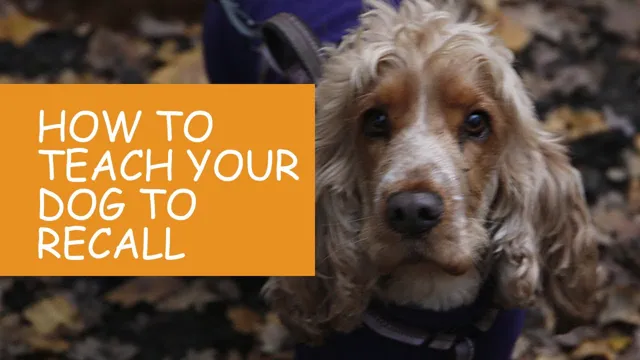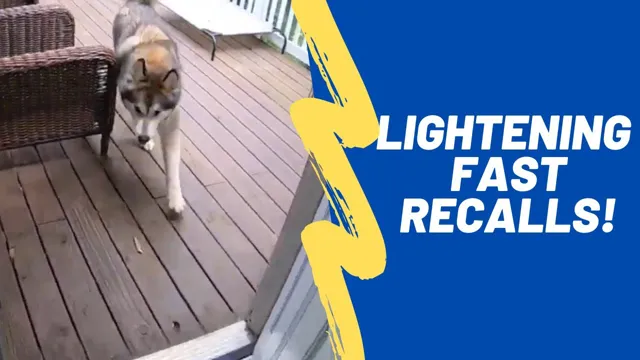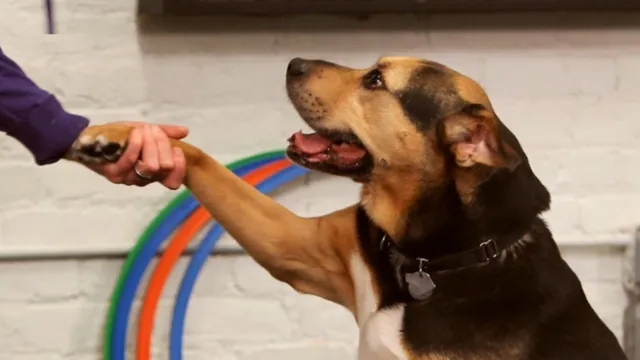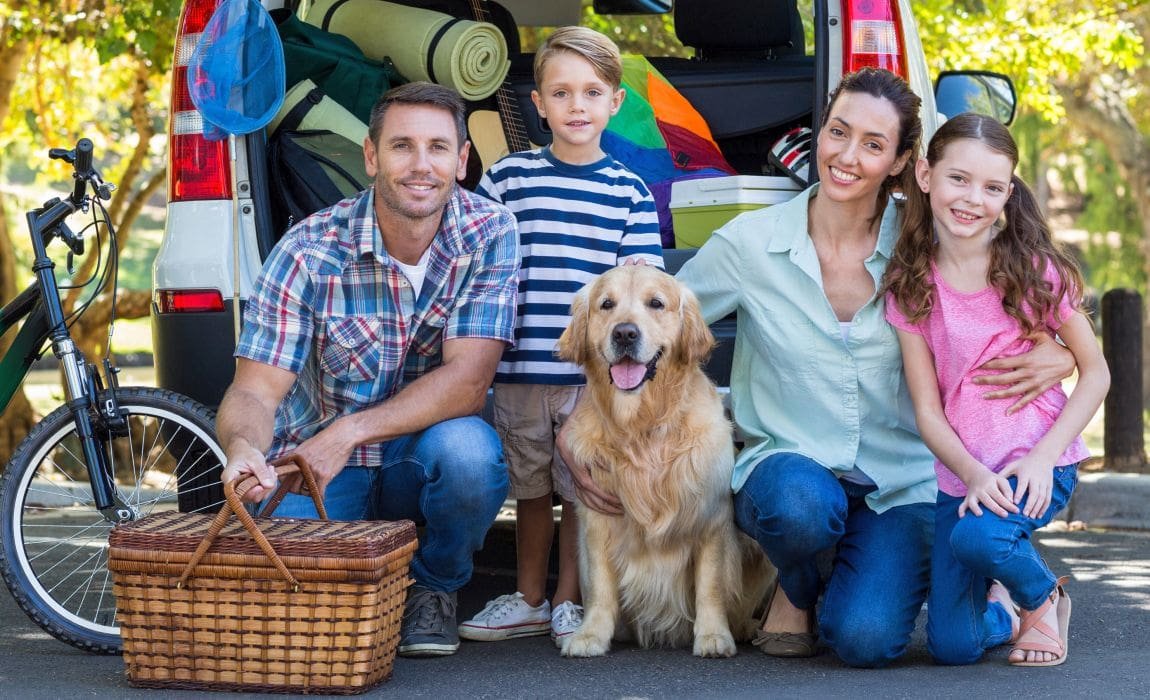Learn How to Train Your Dog Emergency Recall: A Guide

Teaching your dog an emergency recall is one of the most important things you can do as a pet owner. Not only will it help keep your pup safe, but it can also help you avoid potential disasters. With the right methods and a little patience, you can teach your dog to come to you when you call – even in an emergency situation. In this blog, we’ll explore the fundamentals of teaching your dog an emergency recall, so you can be prepared for any situation.
Understanding the Basics
Teaching your dog emergency recall is an essential skill that all pet owners should be familiar with. It provides a way to keep your pup safe in situations where they might otherwise get themselves in trouble. It’s also a great way to keep them from running off into danger or getting lost. Emergency recall is a simple yet important skill that can be taught to any dog. It’s best to start by teaching the basics of recall, such as coming when called, before progressing to emergency recall.
This will help your pup to understand the concept of recall and be more likely to respond correctly in an emergency. Start by practicing recall in a quiet, distraction-free area. Call your pup’s name and then reward them with a treat or toy when they come to you. Once they’ve mastered this, you can add distractions such as a squeaky toy or another person. As your pup gets better at responding to recall, you can gradually increase the distance between you and your pup.
When you’re comfortable that your pup can reliably come when called, you’re ready to start teaching the emergency recall. Before you begin, make sure you have a reward such as a toy or treat that your pup really loves. When you’re ready, call your pup’s name and then immediately reward them with the treat or toy. When done consistently, your pup will learn that coming to you means a reward and will be more likely to respond in an emergency. It’s important to practice emergency recall regularly.
This will help your pup to remember the command and stay safe in an emergency situation. Be sure to practice in a variety of environments and to use different distractions and rewards to keep your pup engaged and interested. With consistency and patience, your pup will soon have a reliable emergency recall that can help keep them safe.
Why Emergency Recall is Necessary
Emergency recall is a skill that every dog owner should have in their toolkit. Teaching your pup this skill can be the difference between life and death in certain situations. Emergency recall is a must-have tool for off-leash walks and times when your pup is in an unfamiliar or dangerous environment. It can help you keep your pup safe and out of harm’s way, whether it is from a potential threat or hazardous terrain. At the same time, it gives you peace of mind knowing that you can quickly and effectively call your pup away from these situations.
Learning how to teach your dog emergency recall is an essential part of being a responsible pet owner.

Explaining the Command
Teaching your dog emergency recall is an important part of responsible pet ownership. It can often be tricky to get your pup to come when you call, but with some patience and practice, your pup will soon be coming to you every time you call their name. To start, make sure that your pup has been given a strong, positive association with their name. This can be done through rewards such as treats and praise when they respond to their name. Then, start practicing your emergency recall in a low-distraction environment.
This may include inside your home or in your backyard. Choose a keyword or phrase that your pup will be familiar with, such as “Come!” or “Here!” and give it to them every time you call them. After some time, try increasing the distraction level by practicing recall in a park or another location with more distractions. As your pup learns to come instantly, you can use the same phrase when calling them in an emergency. With some patience and practice, you’ll have an obedient pup who comes to your call, no matter the situation.
Training Your Dog
Having a dog with a reliable emergency recall is essential for keeping them safe and sound. Emergency recall is when you call your dog to come to you, no matter the situation. This can be helpful if your pup is running away from you, or if they are in an area they shouldn’t be. It can also be used to protect a dog from a dangerous situation. Training your dog to come when called is a must, but it is not always easy.
The key to teaching an emergency recall is consistency and patience. Here are some tips to help you teach your pup to come when called: Start by teaching your pup a basic recall command. Use a phrase like “Come!” or “Here!” to get their attention. Reward them with treats when they obey.
Once your pup knows the basic command, you can start to practice in a variety of environments. Start in a controlled environment, like your backyard, and gradually move to more distracting environments. Before you can expect your pup to come when called in emergency situations, you need to make sure they understand the command in all situations.
Practice in areas with more distractions, such as parks or dog parks. When you practice recall, make sure to reward your pup every single time they come when called. If you don’t reward them, they won’t understand why they should come when called.
As your pup gets better at recall, you can add distance and duration. Keep practicing even when your pup is good at recall, so they stay sharp. By teaching your pup an emergency recall command, you can ensure their safety in any situation. This will also give you peace of mind knowing that you can always get your pup’s attention when needed. Remember to be consistent and reward your pup when they come when called.
With enough practice, your pup will be
Creating a Positive Environment
Creating a positive environment and teaching your dog emergency recall is essential for a happy and healthy relationship between you and your pup. By taking the time to properly train your dog and implement positive reinforcement techniques, you can ensure that your pup will have a strong understanding of the command and will be able to recall it in any situation. This can help to keep your dog safe and prevent any potential accidents. Training your pup in a positive way will also help to strengthen your bond and create a trusting relationship between you and your pup.
Using Rewards
Are you looking for a way to teach your pup how to perform an emergency recall? Rewards are a great tool to teach your dog the important skill of emergency recall. By using rewards, you can help your pup learn to come to you even in the most distracting of situations. When training your pup, make sure to start in a low distraction environment and gradually add distractions as they get better at the command. Make sure to reward your pup with their favorite treats or toys when they come to you! This will help them associate the command with the reward and make it easier for them to remember in the future. With patience and consistency, you’ll soon have a pup who will come to you on command no matter the situation.

Practicing the Command
Do you ever worry about your pup getting into trouble when you’re not around? Teaching your dog an emergency recall is an excellent way to ensure their safety and give you peace of mind. An emergency recall is a command that you teach your pup to respond to immediately, no matter what they’re doing. With some patience and practice, you can teach your pup to come back to you when you call them. That way, if they ever get in a sticky situation, you can bring them back to safety in no time.
Using Emergency Recall in Real Life
Teaching your dog emergency recall is an essential part of responsible pet ownership. Emergency recall is the ability of your pup to come back to you from a distance when called, regardless of what else is going on. It can be a life saving skill if your pup gets out of the yard or a dangerous situation. The first step in teaching emergency recall is to create an environment where you can have your pup’s full attention. This means having no distractions like other people, animals, or toys.
Next, choose a command to use when calling your pup. It could be something like “Come!” or “Here!” and make sure to say it in a confident and excited tone. Once you have your pup’s attention, start practicing the command from a short distance. Have your pup come to you and reward them with a treat or verbal praise when they do. As your pup gets better, move further away and reward them for coming back each time.
If your pup doesn’t respond, don’t get angry or use physical punishment. Simply try again and make sure to reward them for successful recalls. You want to make sure your pup associates the recall command with something positive. So, every time you call them, reward them with something they like. This will help ensure they come back to you every time you call.
Emergency recall is a skill that takes time and patience to master. Just remember to be consistent with training and always reward your pup for coming back when called. With the right practice and positive reinforcement, your pup will soon learn to respond to the recall command without fail.
Staying Alert
In this blog section, we will discuss an essential skill for any pup: emergency recall. Teaching your pup how to respond to an emergency recall command can help keep them safe in any situation. Whether you’re out for a walk or playing in the park, having your pup respond to an emergency recall command can help you get them out of harm’s way quickly and efficiently. We’ll go over the basics of teaching your pup emergency recall, so you can have the peace of mind knowing that your pup will respond at a moment’s notice.
Recalling in Emergency Situations
Having your dog respond to your recall command in an emergency situation is an invaluable skill. Teaching your dog the basics of emergency recall can help keep them safe and ensure you will have a reliable companion in any type of situation. The key to teaching your dog emergency recall is to make sure you practice in a variety of settings and be consistent with your instruction. Start by teaching your dog a basic recall word, like “come” or “here.” Make sure you use the same word each time and that it is only associated with the recall command.
Use treats, toys, and verbal praise to reward your dog when they come back to you. Once your dog is responding reliably, practice in different settings and with more distractions. This will help them understand the command better and become accustomed to responding in all types of situations. With enough practice and consistency, your dog will become an expert at emergency recall.
Conclusion
And there you have it, folks! Teaching your dog emergency recall is not only a great way to keep them safe, but also a great way to bond. Just remember to stay patient, reward your pup, and you’ll have them coming back to you in no time!”
FAQs
How do I teach my dog emergency recall?
Training your dog emergency recall requires patience and repetition. Start by teaching your dog the basic commands of sit, stay, and come. Then, create a special cue for emergency recall by saying a specific phrase, such as “Emergency Recall!” whenever you want your dog to come to you immediately. Practice this phrase with your dog and reward him with a treat or praise whenever he follows the command.
What do I need to teach my dog emergency recall?
You will need a few items to help teach your dog emergency recall. These include a clicker, treats, a long leash or line, and a quiet area to practice in. You may also want to have a whistle or other noise maker to help get your dog’s attention.
How often should I practice emergency recall with my dog?
To ensure that your dog learns emergency recall, it is important to practice the command regularly. Aim to practice at least three times a week for 10-15 minutes each time. Start with shorter practice times and gradually increase the length of the session as your dog learns and becomes more proficient.
How can I make emergency recall more effective?
To make emergency recall more effective, use treats as a reward for your dog and be consistent with the command. Additionally, try to practice emergency recall in different locations and with different distractions. This will help your dog understand the command better and will increase his response rate when you use the command in emergency situations.
What should I do if my dog does not respond to emergency recall?
If your dog does not respond to emergency recall, do not get frustrated or punish him. Instead, try to use a different cue for the command or practice more in a different location with no distractions. Additionally, make




